Among the localities piloting the project model of 1 million hectares of high-quality, low-emission rice associated with green growth in the Mekong Delta (project of 1 million hectares of high-quality rice), Tra Vinh province is considered the most successful in terms of emission reduction, especially Phat Tai Agricultural Cooperative (Thanh My commune, Chau Thanh district).
Rice cultivation reduces CO2 emissions with the highest index
In the summer-autumn crop of 2024, two pilot models in Tra Vinh province reduced emissions by an average of 8.18 tons of CO2 equivalent/ha compared to traditional farming outside the model. By the autumn-winter crop of 2024, the two models reduced emissions by an average of 5.75 tons of CO2 equivalent/ha compared to outside the model.
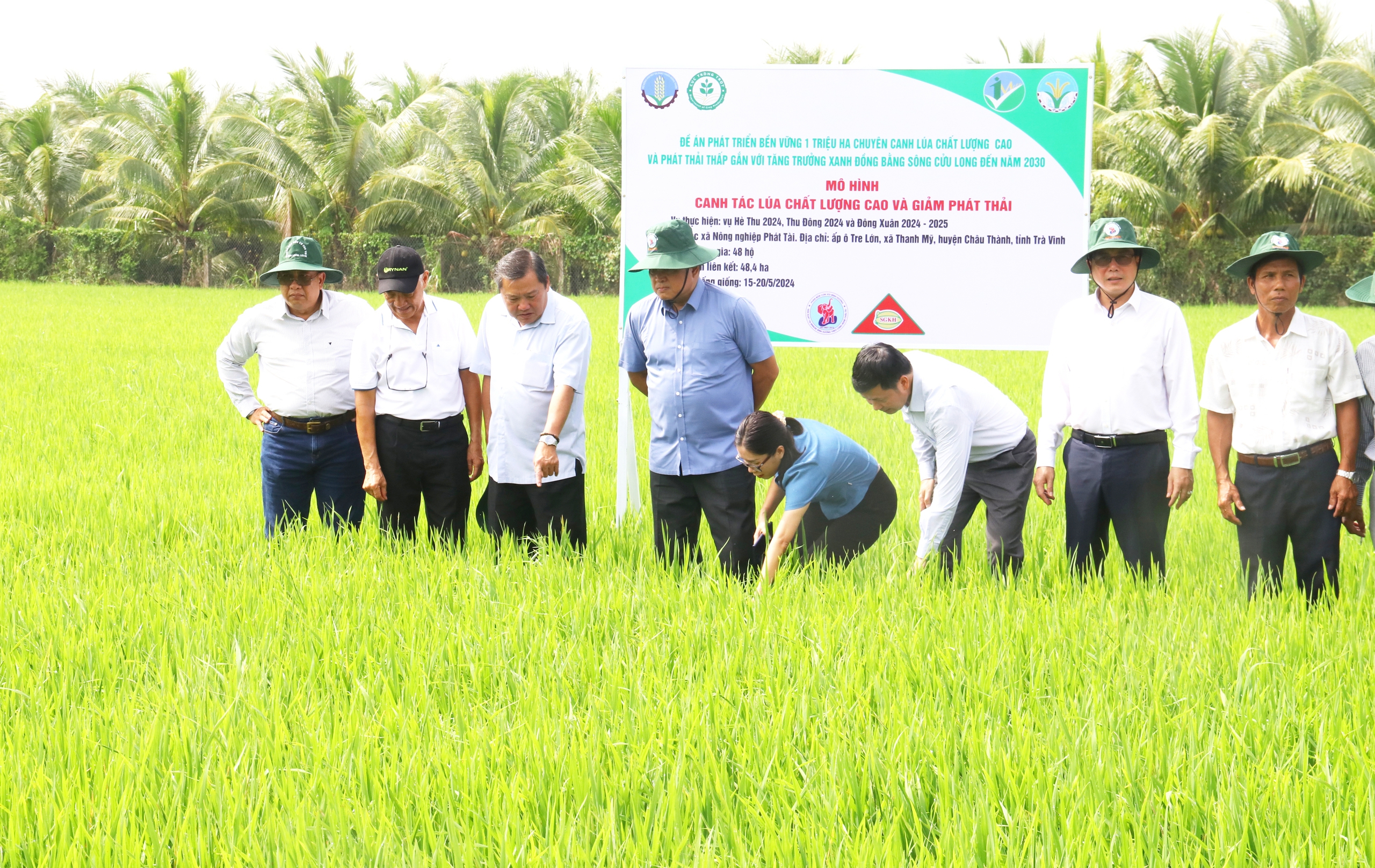
Leaders of the Ministry of Agriculture and Rural Development inspected the pilot model of the 1 million hectare high-quality, low-emission rice project of Phat Tai Agricultural Cooperative. Photo: HX
Particularly, Phat Tai Agricultural Cooperative (Thanh My commune, Chau Thanh district) - 1 of 2 cooperatives participating in the pilot project of 1 million hectares of high-quality rice, in the 2024 autumn-winter crop reduced 10.93 tons of CO2 equivalent/ha compared to outside the model.
The above calculation results must be based on baseline - basic data to compare emission reduction efficiency. It is known that the baseline of models in Tra Vinh measured up to 10.88-16.65 tons of CO2 equivalent/ha.
According to calculations, the two models have helped reduce greenhouse gas emissions by 20-30% compared to outside the model. This is considered an outstanding result compared to other provinces and cities participating in the pilot project.
Calculations by the Department of Agriculture and Rural Development of Tra Vinh province show that the productivity of the two pilot models in Tra Vinh has also increased significantly. In the summer-autumn crop of 2024, the average yield reached 64.5 quintals/ha, 3 quintals/ha higher than the non-model, the total cost decreased by 14%, and the profit increased by 20%.
By the 2024 autumn-winter crop, the yield will reach 70.5 quintals/ha, costs will decrease by 10.6-15.8%, and profits will be 13.6-14.8% higher. Currently, in the 2024-2025 winter-spring crop, two models are in the production stage.
In addition, the two models are also effective in contributing to environmental protection, moving towards building a brand of Tra Vinh province's emission-reducing rice, contributing to increasing the value of Tra Vinh province's rice industry.
For Can Tho City, 2 rice crops under the project have been implemented, but due to the lack of baseline assessment, the amount of emission reduction has not been calculated.
The remaining localities have only harvested one rice crop. Specifically, the pilot model in Soc Trang reduced emissions by about 7.04 CO2 equivalent/ha in the 2024 summer-autumn crop.
The pilot model in Kien Giang province reduced emissions by about 7.8 tons of CO2 equivalent/ha in the 2024 autumn-winter crop, and the pilot model in Dong Thap province reduced 4.81 tons of CO2 equivalent/ha in the 2024 autumn-winter crop.
The Director of the Cooperative is an outstanding Vietnamese farmer.
Phat Tai Agricultural Cooperative is directed by Tran Van Chung (born in 1964, an outstanding Vietnamese farmer in 2022). Participating in the pilot project of 1 million hectares, Mr. Chung's cooperative has 48 members, with a total area of 48.4 hectares.
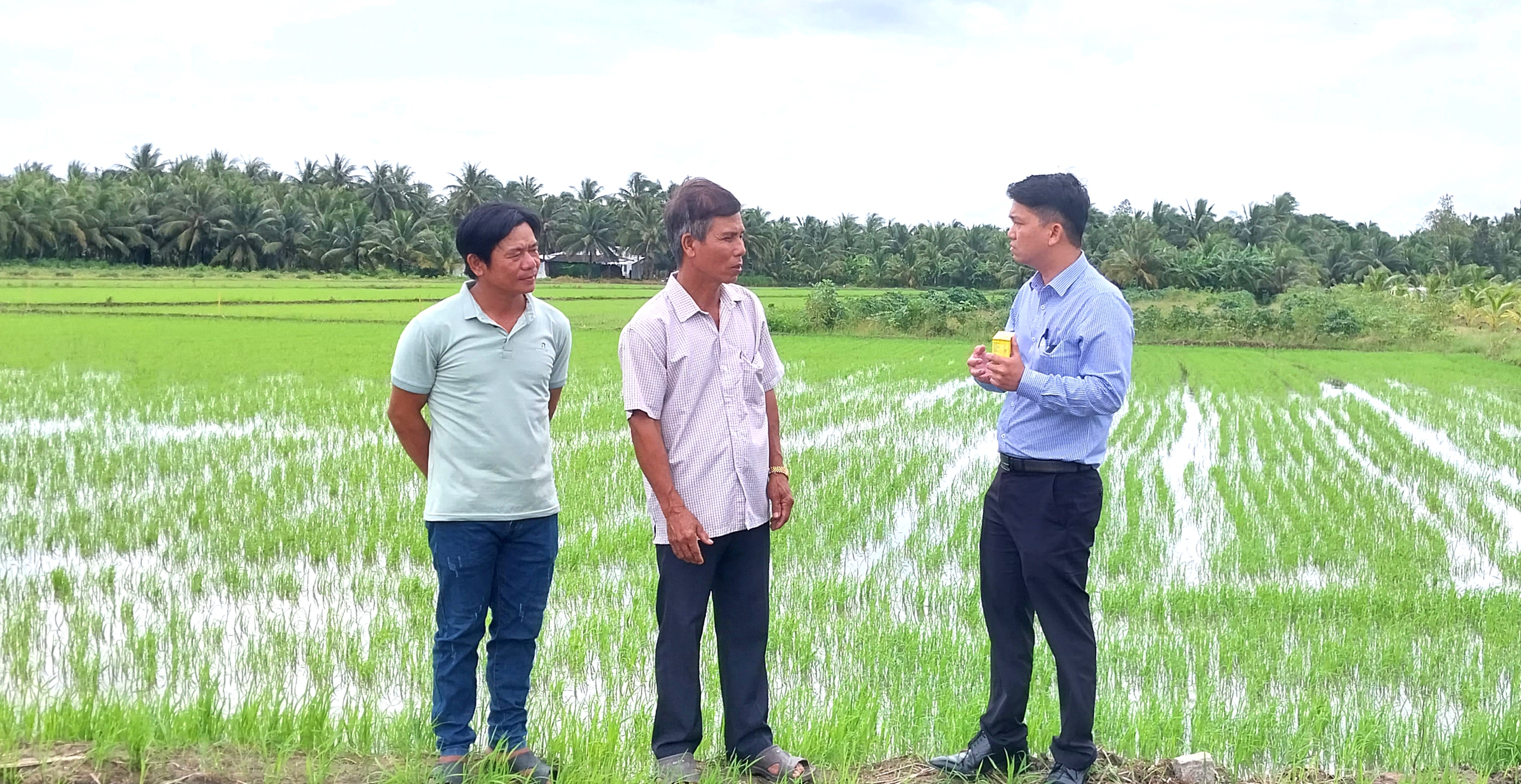
Mr. Tran Van Chung (second from left) discussed with businesses about biological drugs used in the pilot model of the project of 1 million hectares of high-quality, low-emission rice. Photo: HX
Mr. Chung said that participating in the pilot model, all cooperative members use certified rice or higher, using 70-80 kg/ha of seeds. During the production process, the alternating flooding and drying process is well applied (currently, the cooperative's cultivated land is located in a concentrated dike, with water regulation sluices, so the alternating flooding and drying process is easy to implement), and pesticides are used in a safe manner (mostly organic fertilizers are used).
In particular, when harvesting, 100% of the straw in the field is removed from the field and used as animal feed. This is a mandatory step and cannot be buried in the soil for any reason, even during the rainy season (some pilot models of the 1 million hectare high-quality rice project have encountered difficulties with this issue - PV). Therefore, the issue of emission reduction is highly appreciated.
In addition, the cooperative signed contracts with enterprises to supply input materials and support output, so the input costs have been reduced according to the process, and now they are even lower, and people are very confident in production. The profit of the model reaches 31-50 million VND/ha/crop, an increase of 16-20% compared to outside the model (equivalent to an increase of 5.1-7.6 million VND/ha/crop).
Due to the above effectiveness, in 2025, according to Mr. Chung, the cooperative will expand the model area to 100 hectares.
Mr. Chung emphasized that with the above method, people always have sustainable income because costs are significantly reduced, thereby ensuring production, contributing to increasing the value of Vietnamese rice.
Mr. Le Van Dong - Deputy Director of the Department of Agriculture and Rural Development of Tra Vinh province said that Tra Vinh has the strength of having a relatively large herd of cows (nearly 220,000 cows), therefore, when harvesting rice, the amount of straw collected from the fields is quite effective, unlike other localities that have difficulty handling straw.
In the coming time, in addition to the two cooperatives participating in the pilot, Tra Vinh will continue to expand the model to about 1,550 hectares in 2025, then it will be mass-produced, no longer the model. During the production process, community agricultural extension teams in 42 communes will participate in supporting the project.
"This will be a strong arm to support cooperatives in implementing the project in 2025 and the following years," said Mr. Dong.
Growing rice to reduce emissions is certainly a way to help farmers ensure their health, reduce costs, increase income and is one of the sustainable poverty reduction directions in Tra Vinh in particular and the Mekong Delta region in general.
Phat Tai Agricultural Cooperative has a continuous cultivation area of 150 hectares with 94 members, a charter capital of 500 million VND, total revenue of 1.3 billion VND, and a profit of 73.42 million VND. Currently, the cooperative has a head office, 1 drying kiln, 1 rice mill, 1 warehouse with an area of nearly 1,000m2 and 1 plow.
Source: https://danviet.vn/trong-lua-giam-phat-thai-o-tra-vinh-nong-dan-khoe-hon-thu-nhap-tot-hon-nha-nao-trong-la-trung-20250204154053985.htm


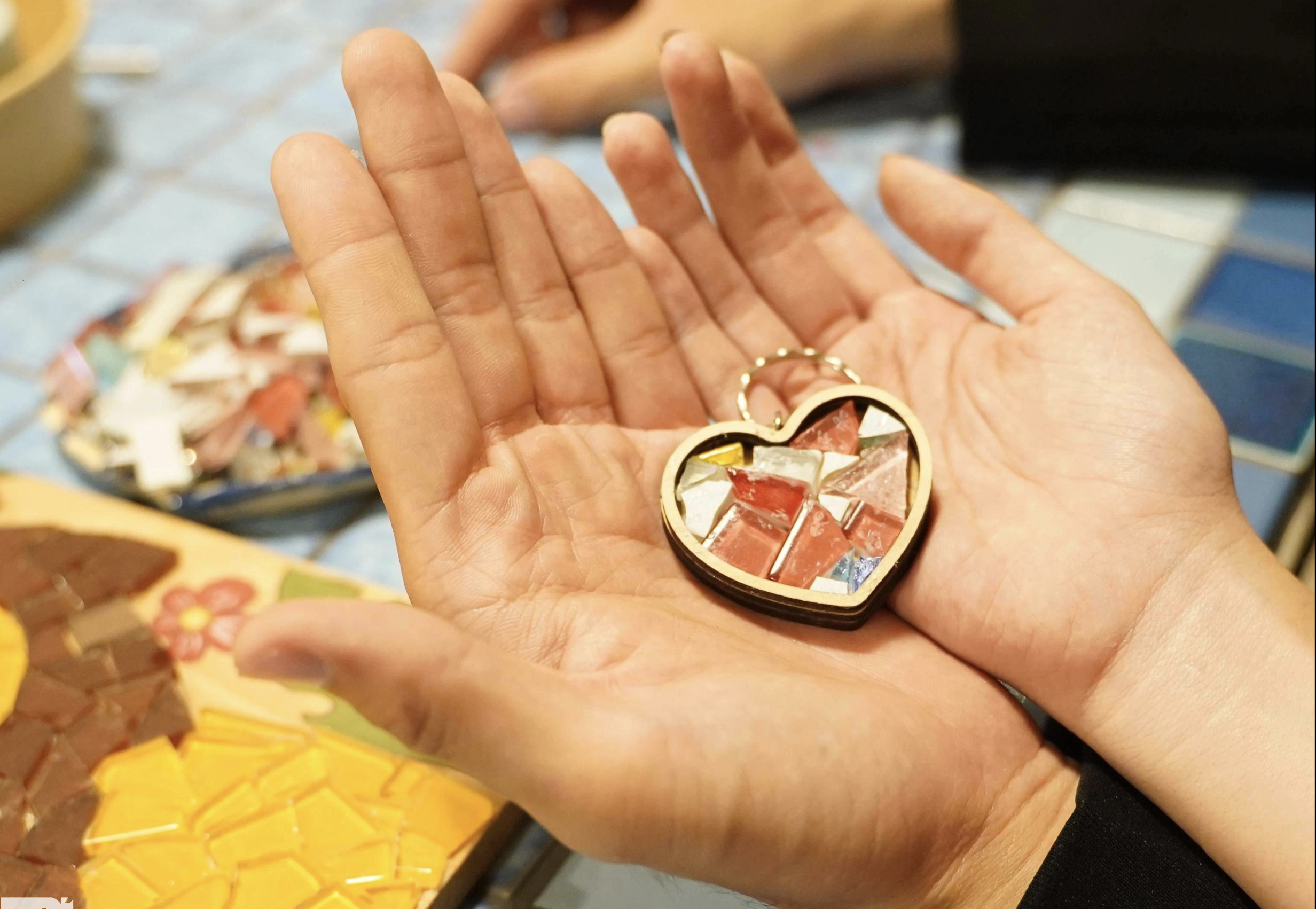


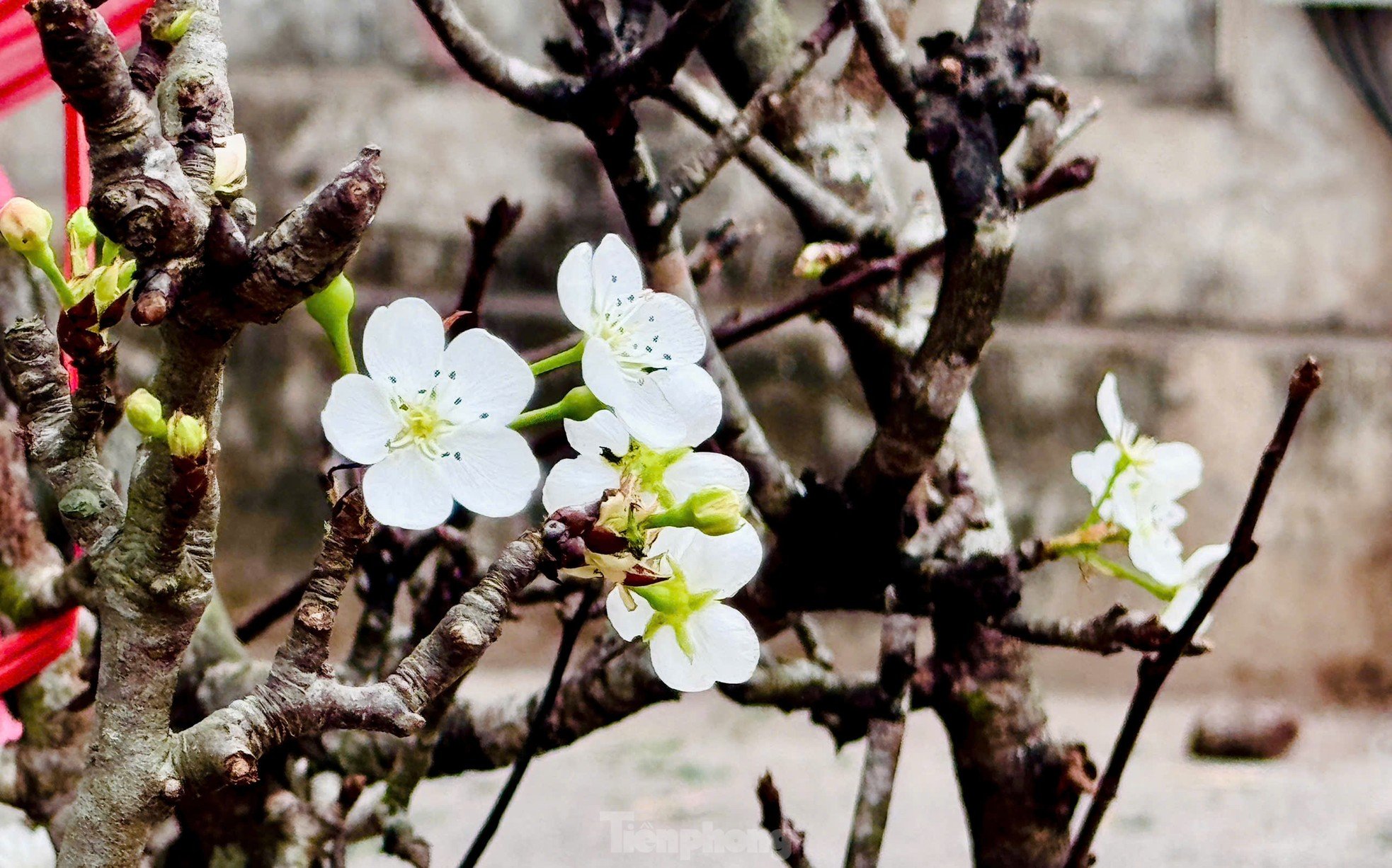
























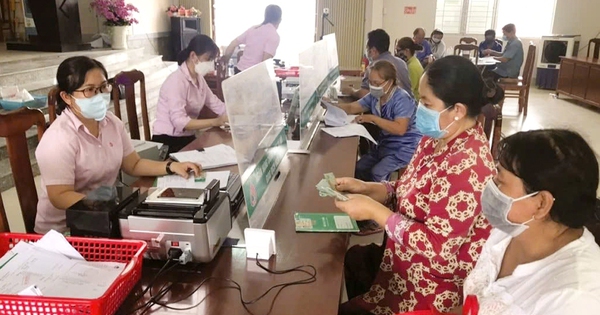
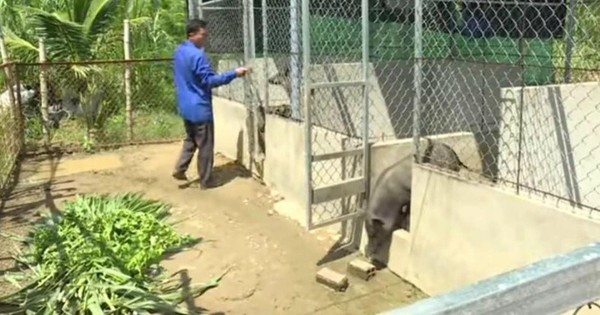
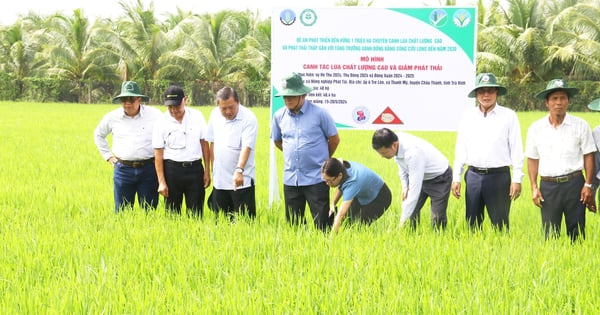
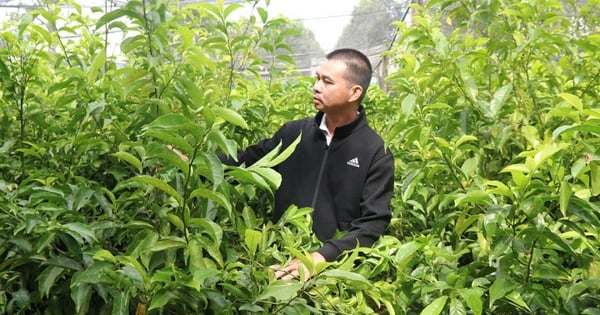
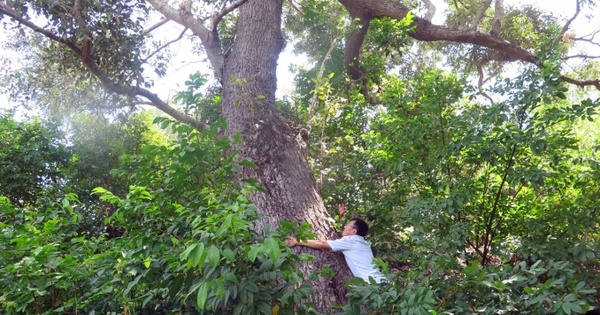
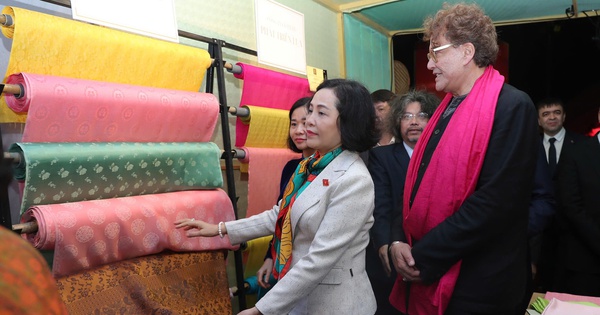
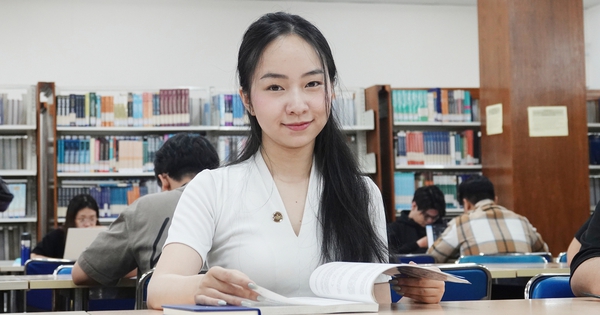
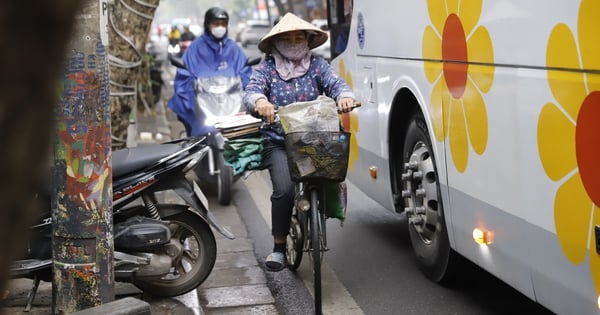
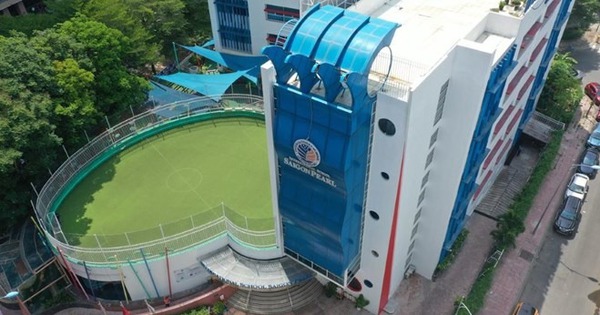





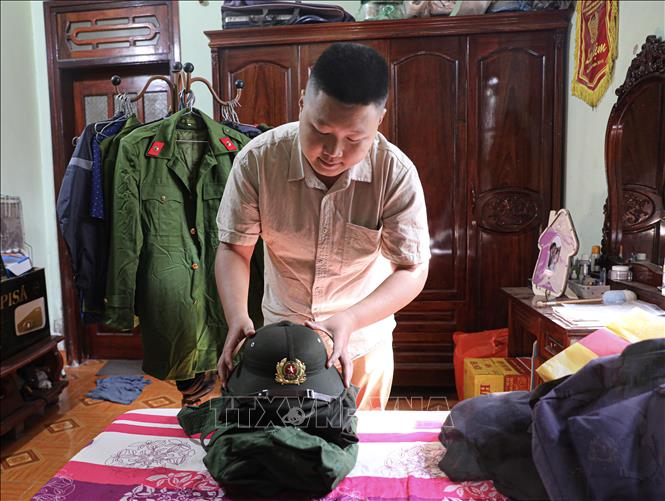

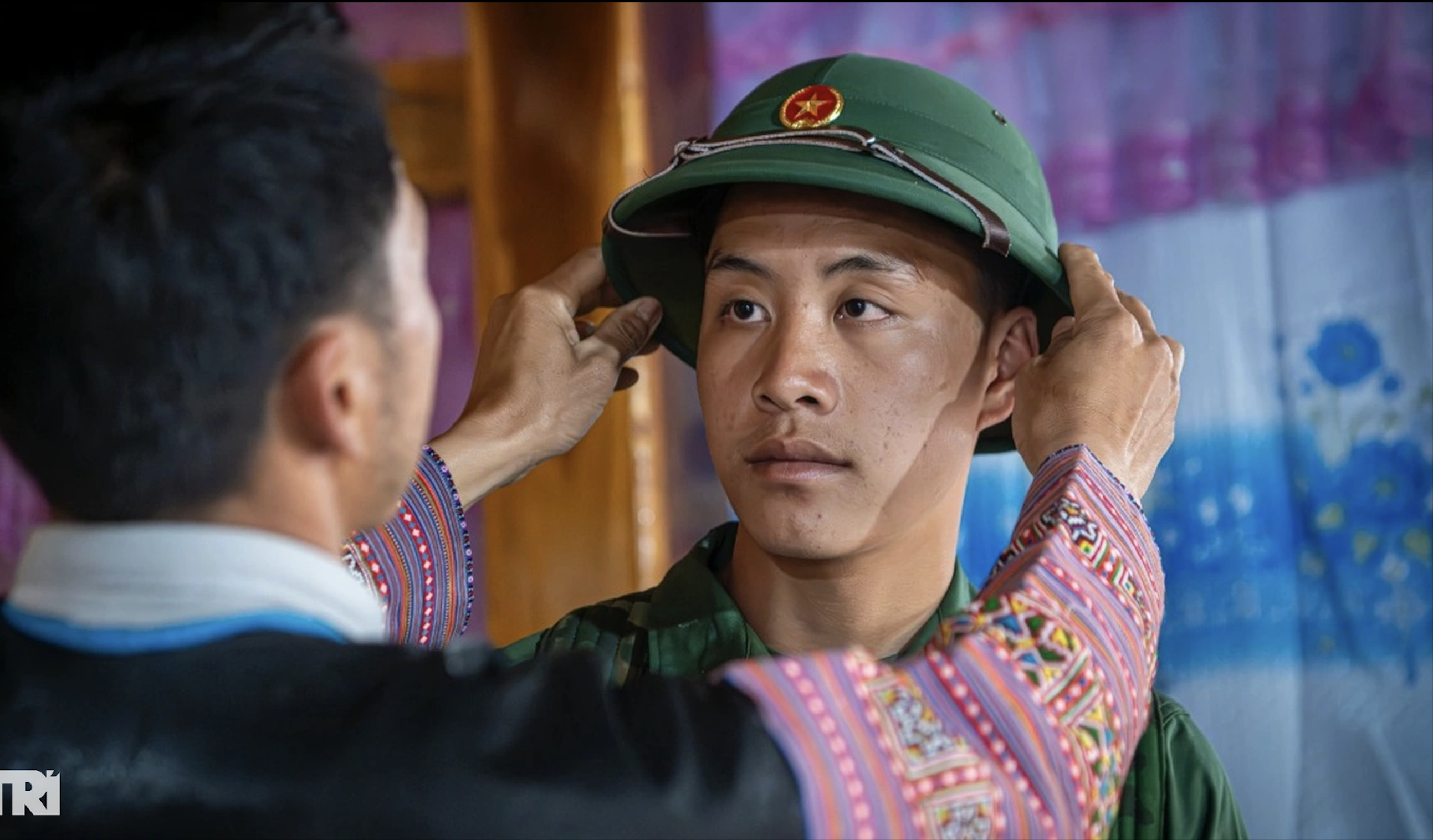
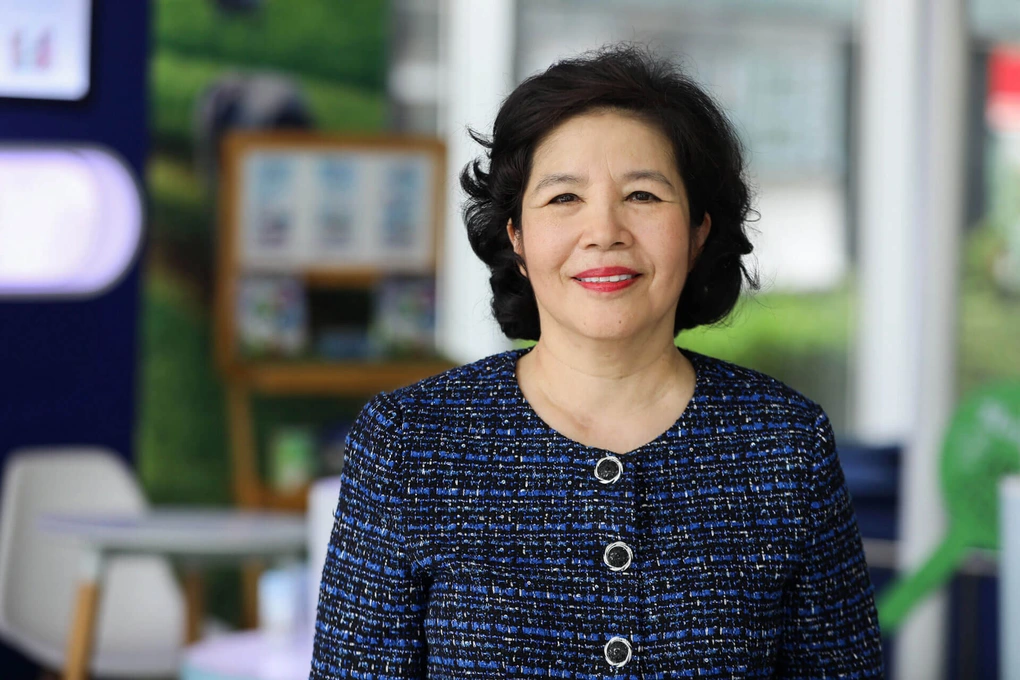




Comment (0)